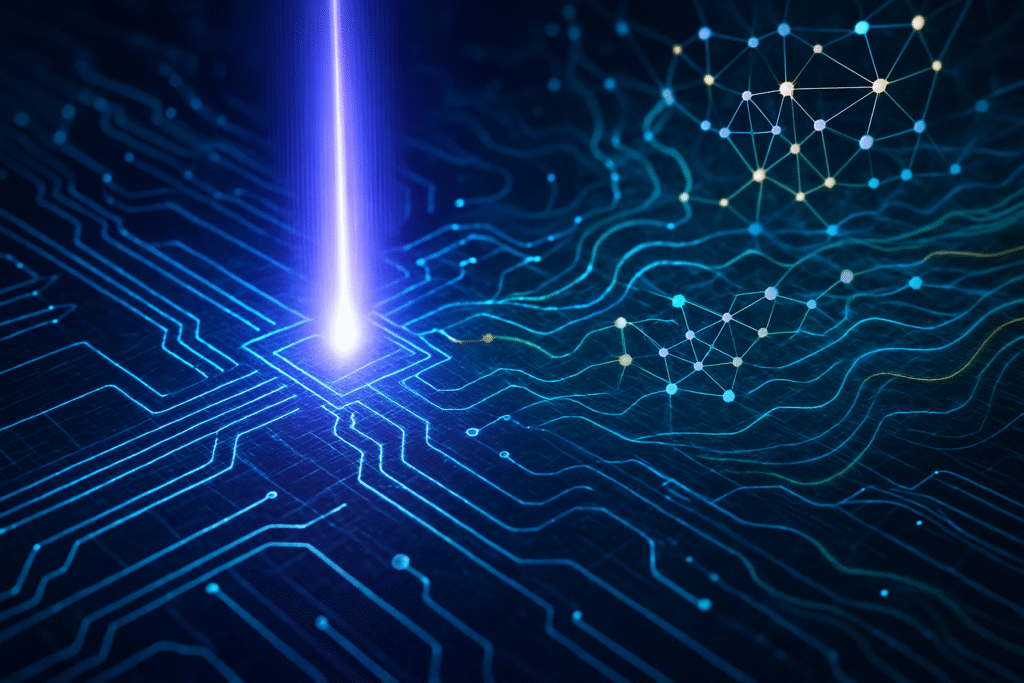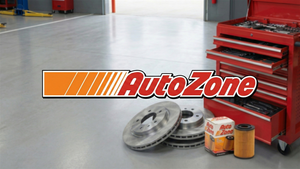
As artificial intelligence continues its relentless march into every facet of technology and society, the foundational hardware enabling this revolution faces ever-increasing demands. At the heart of this challenge lies Extreme Ultraviolet (EUV) Lithography, a sophisticated semiconductor manufacturing process that has become indispensable for producing the high-performance, energy-efficient processors required by today's most advanced AI models. As of October 2025, EUV is not merely an incremental improvement; it is the critical enabler sustaining Moore's Law and unlocking the next generation of AI breakthroughs.
Without continuous advancements in EUV technology, the exponential growth in AI's computational capabilities would hit a formidable wall, stifling innovation from large language models to autonomous systems. The immediate significance of EUV lies in its ability to pattern ever-smaller features on silicon wafers, allowing chipmakers to pack billions more transistors onto a single chip, directly translating to the raw processing power and efficiency that AI workloads desperately need. This advanced patterning is crucial for tackling the complexities of deep learning, neural network training, and real-time AI inference at scale.
The Microscopic Art of Powering AI: Technical Deep Dive into EUV
EUV lithography operates by using light with an incredibly short wavelength of 13.5 nanometers, a stark contrast to the 193-nanometer wavelength of its Deep Ultraviolet (DUV) predecessors. This ultra-short wavelength allows for the creation of exceptionally fine circuit patterns, essential for manufacturing chips at advanced process nodes such as 7nm, 5nm, and 3nm. Leading foundries, including Taiwan Semiconductor Manufacturing Company (TSMC) (NYSE: TSM), Samsung Electronics (KRX: 005930), and Intel Corporation (NASDAQ: INTC), have fully integrated EUV into their high-volume manufacturing (HVM) lines, with plans already in motion for 2nm and even smaller nodes.
The fundamental difference EUV brings is its ability to achieve single-exposure patterning for intricate features. Older DUV technology often required complex multi-patterning techniques—exposing the wafer multiple times with different masks—to achieve similar resolutions. This multi-patterning added significant steps, increased production time, and introduced potential yield detractors. EUV simplifies this fabrication process, reduces the number of masking layers, cuts production cycles, and ultimately improves overall wafer yields, making the manufacturing of highly complex AI-centric chips more feasible and cost-effective. Initial reactions from the semiconductor research community and industry experts have been overwhelmingly positive, acknowledging EUV as the only viable path forward for advanced node scaling. The deployment of ASML Holding N.V.'s (NASDAQ: ASML) next-generation High-Numerical Aperture (High-NA) EUV systems, such as the EXE platforms with a 0.55 numerical aperture (compared to the current 0.33 NA), is a testament to this, with high-volume manufacturing using these systems anticipated between 2025 and 2026, paving the way for 2nm, 1.4nm, and even sub-1nm processes.
Furthermore, advancements in supporting materials and mask technology are crucial. In July 2025, Applied Materials, Inc. (NASDAQ: AMAT) introduced new EUV-compatible photoresists and mask solutions aimed at enhancing lithography performance, pattern fidelity, and process reliability. Similarly, Dai Nippon Printing Co., Ltd. (DNP) (TYO: 7912) unveiled EUV-compatible mask blanks and resists in the same month. The upcoming release of the multi-beam mask writer MBM-4000 in Q3 2025, specifically targeting the A14 node for High-NA EUV, underscores the ongoing innovation in this critical ecosystem. Research into EUV photoresists also continues to push boundaries, with a technical paper published in October 2025 investigating the impact of polymer sequence on nanoscale imaging.
Reshaping the AI Landscape: Corporate Implications and Competitive Edge
The continued advancement and adoption of EUV lithography have profound implications for AI companies, tech giants, and startups alike. Companies like NVIDIA Corporation (NASDAQ: NVDA), Alphabet Inc. (NASDAQ: GOOGL), Microsoft Corporation (NASDAQ: MSFT), Meta Platforms, Inc. (NASDAQ: META), and Advanced Micro Devices, Inc. (NASDAQ: AMD), which are at the forefront of AI development, stand to benefit immensely. Their ability to design and procure chips manufactured with EUV technology directly translates into more powerful, energy-efficient AI accelerators, enabling them to train larger models faster and deploy more sophisticated AI applications.
The competitive landscape is significantly influenced by access to these cutting-edge fabrication capabilities. Companies with strong partnerships with leading foundries utilizing EUV, or those investing heavily in their own advanced manufacturing (like Intel), gain a substantial strategic advantage. This allows them to push the boundaries of AI hardware, offering products with superior performance-per-watt metrics—a critical factor given the immense power consumption of AI data centers. Conversely, companies reliant on older process nodes may find themselves at a competitive disadvantage, struggling to keep pace with the computational demands of the latest AI workloads.
EUV technology directly fuels the disruption of existing products and services by enabling new levels of AI performance. For instance, the ability to integrate more powerful AI processing directly onto edge devices, thanks to smaller and more efficient chips, could revolutionize sectors like autonomous vehicles, robotics, and smart infrastructure. Market positioning for AI labs and tech companies is increasingly tied to their ability to leverage these advanced chips, allowing them to lead in areas such as generative AI, advanced computer vision, and complex simulation, thereby cementing their strategic advantages in a rapidly evolving market.
EUV's Broader Significance: Fueling the AI Revolution
EUV lithography's role extends far beyond mere chip manufacturing; it is a fundamental pillar supporting the broader AI landscape and driving current technological trends. By enabling the creation of denser, more powerful, and more energy-efficient processors, EUV directly accelerates progress in machine learning, deep neural networks, and high-performance computing. This technological bedrock facilitates the development of increasingly complex AI models, allowing for breakthroughs in areas like natural language processing, drug discovery, climate modeling, and personalized medicine.
However, this critical technology is not without its concerns. The immense capital expenditure required for EUV equipment and the sheer complexity of the manufacturing process mean that only a handful of companies globally can operate at this leading edge. This creates potential choke points in the supply chain, as highlighted by geopolitical factors and export restrictions on EUV tools. For example, nations like China, facing limitations on acquiring advanced EUV systems, are compelled to explore alternative chipmaking methods, such as complex multi-patterning with DUV systems, to simulate EUV-level resolutions, albeit with significant efficiency drawbacks.
Another significant challenge is the substantial power consumption of EUV tools. Recognizing this, TSMC launched its EUV Dynamic Energy Saving Program in September 2025, demonstrating promising results by reducing the peak power draw of EUV tools by 44% and projecting savings of 190 million kilowatt-hours of electricity by 2030. This initiative underscores the industry's commitment to addressing the environmental and operational impacts of advanced manufacturing. In comparison to previous AI milestones, EUV's impact is akin to the invention of the transistor itself—a foundational technological leap that enables all subsequent innovation, ensuring that Moore's Law, once thought to be nearing its end, can continue to propel the AI revolution forward for at least another decade.
The Horizon of Innovation: Future Developments in EUV
The future of EUV lithography promises even more incredible advancements, with both near-term and long-term developments poised to further reshape the semiconductor and AI industries. In the immediate future (2025-2026), the focus will be on the full deployment and ramp-up of High-NA EUV systems for high-volume manufacturing of 2nm, 1.4nm, and even sub-1nm process nodes. This transition will unlock unprecedented transistor densities and performance capabilities, directly benefiting the next generation of AI processors. Continued investment in material science, particularly in photoresists and mask technologies, will be crucial to maximize the resolution and efficiency of these new systems.
Looking further ahead, research is already underway for "Beyond EUV" technologies. This includes the exploration of Hyper-NA EUV systems, with a projected 0.75 numerical aperture, potentially slated for insertion after 2030. These systems would enable even finer resolutions, pushing the boundaries of miniaturization to atomic scales. Furthermore, alternative patterning methods involving even shorter wavelengths or novel approaches are being investigated to ensure the long-term sustainability of scaling.
Challenges that need to be addressed include further optimizing the energy efficiency of EUV tools, reducing the overall cost of ownership, and overcoming fundamental material science hurdles to ensure pattern fidelity at increasingly minuscule scales. Experts predict that these advancements will not only extend Moore's Law but also enable entirely new chip architectures tailored specifically for AI, such as neuromorphic computing and in-memory processing, leading to unprecedented levels of intelligence and autonomy in machines. Intel, for example, deployed next-generation EUV lithography systems at its US fabs in September 2025, emphasizing high-resolution chip fabrication and increased throughput, while TSMC's US partnership expanded EUV lithography integration for 3nm and 2nm chip production in August 2025.
Concluding Thoughts: EUV's Indispensable Role in AI's Ascent
In summary, EUV lithography stands as an indispensable cornerstone of modern semiconductor manufacturing, absolutely critical for producing the high-performance AI processors that are driving technological progress across the globe. Its ability to create incredibly fine circuit patterns has not only extended the life of Moore's Law but has also become the bedrock upon which the next generation of artificial intelligence is being built. From enabling more complex neural networks to powering advanced autonomous systems, EUV's impact is pervasive and profound.
The significance of this development in AI history cannot be overstated. It represents a foundational technological leap that allows AI to continue its exponential growth trajectory. Without EUV, the pace of AI innovation would undoubtedly slow, limiting the capabilities of future intelligent systems. The ongoing deployment of High-NA EUV systems, coupled with continuous advancements in materials and energy efficiency, demonstrates the industry's commitment to pushing these boundaries even further.
In the coming weeks and months, the tech world will be watching closely for the continued ramp-up of High-NA EUV in high-volume manufacturing, further innovations in energy-saving programs like TSMC's, and the strategic responses to geopolitical shifts affecting access to this critical technology. EUV is not just a manufacturing process; it is the silent, powerful engine propelling the AI revolution into an ever-smarter future.
This content is intended for informational purposes only and represents analysis of current AI developments.
TokenRing AI delivers enterprise-grade solutions for multi-agent AI workflow orchestration, AI-powered development tools, and seamless remote collaboration platforms. For more information, visit https://www.tokenring.ai/.





